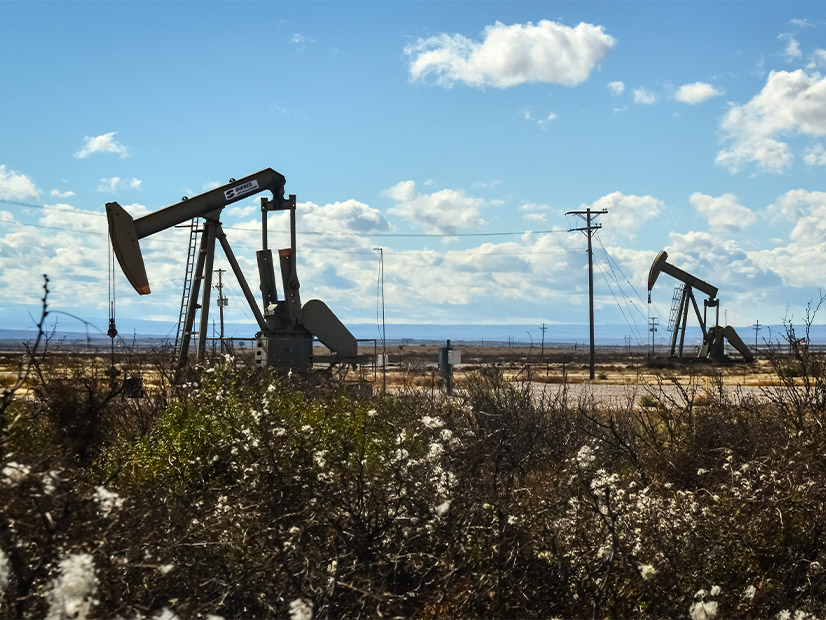
The federal government has finalized rules that will decrease the cost of siting renewable energy generation on public land and increase the cost of leasing it for oil and gas development.
The Department of the Interior announced the final Renewable Energy Rule on April 11. It reduces rent and capacity fees, streamlines the application process, allows for noncompetitive bidding and makes the process more predictable.
The department announced the final Fluid Mineral Leases and Leasing Process Rule the next day. It increases bonding requirements, adds protection for key wildlife habitat and cultural sites, increases royalty rates, boosts the minimum bid amount and creates a per-acre fee for expressions of interest.
Reaction fell along likely lines, with environmental advocates praising both rules and the petroleum industry panning the mineral rule.
Renewable Energy
The renewable rule derives from the Energy Act of 2020. According to a fact sheet, it reduces capacity fees 80% until 2035, then steps the discount down to 20% by 2039. It also establishes incentives for solar and wind projects that entail project labor agreements and use U.S.-made materials.
And it gives the Bureau of Land Management discretion to hold competitive bidding in places where the greatest competitive interest exists; the process for this will be standardized.
DOI said in a news release that the revisions are intended to reduce consumer energy costs and promote clean energy development.
But even as President Joe Biden presses the energy transition away from fossil fuel use, U.S. natural gas output has set records and the U.S. is producing more crude oil than any other nation, ever, according to the Energy Information Administration.
Oil and Gas
The mineral rule is BLM’s first major update to the onshore oil and gas leasing framework since 1988 and entails the first increase in royalty rates since 1920. Some of the provisions in the update were set in the Inflation Reduction Act and the Infrastructure Investment and Jobs Act.
The intention is to “increase returns to the public and disincentivize speculators and irresponsible actors,” DOI said in a news release.
Among the changes, summarized in a fact sheet, are that royalty rates for new oil and gas leases on public land will increase from 12.5% to 16.67%; minimum rental rates will start at $3/acre and rise to $5 and $15 in years three and nine, respectively, of a lease; noncompetitive leasing is eliminated; minimum lease bond is increased to $150,000 and statewide bond to $500,000; and wells will be considered idled after four years rather than seven.
Also, the revisions will guide BLM as it tries to steer leasing toward areas with existing infrastructure and high oil and gas potential — the areas most likely to be developed — and away from areas with sensitive wildlife habitats, high recreational use and cultural resources.
The higher bonding amounts are an attempt to shield taxpayers from the cost of cleaning up orphan wells.
Reactions
“These new regulations are the kind of common-sense reforms the federal oil and gas leasing program has needed for decades,” the Sierra Club said. “The days of oil and gas companies locking up public lands for decades for pennies on the dollar and leaving polluted lands, water and air in their wake are over.”
Friends of the Earth praised the oil and gas lease changes but said the underlying issues remain unaddressed.
“While we support BLM’s steps to curb financial giveaways to Big Oil, this rule fails to confront the massive tide of climate emissions stemming from its leasing program,” FOE said. “If Interior intends to manage our public lands for the public good, then it must account for the future generations living under the threat of catastrophic climate change. Interior must do what the science demands and end the expansion of fossil fuels.”
Fossil industry groups had a different reaction.
The Independent Petroleum Association of America said the Biden administration was trying to “placate a small group of environmentalists” and “further reduce” American oil and natural gas production.
“The final rule will not improve stewardship of federal lands, as BLM claims, but will have the effect of driving mineral production off of these areas. The regulatory environment has become so hostile to American oil and natural gas producers operating on federal land that it’s clear the Biden administration intends for ‘multiple use’ lands to only be used for conservation and recreation. The true losers with this misguided policy are states and localities that rely on revenues from federal land extractive industries to meet their budget obligations year after year.”
The BLM rule will drive small producers off public lands, the Western Energy Alliance said. “The bonding amounts are excessive when there are just 37 orphan wells out of more than 90,000 wells on federal lands. Increasing bonding amounts twentyfold in order to take care of a problem on just 0.004% of wells is way out of proportion. This is another rule by the Biden administration meant to deliver on the president’s promise of no federal oil and natural gas. Western Energy Alliance has no other choice but to litigate this rule.”

